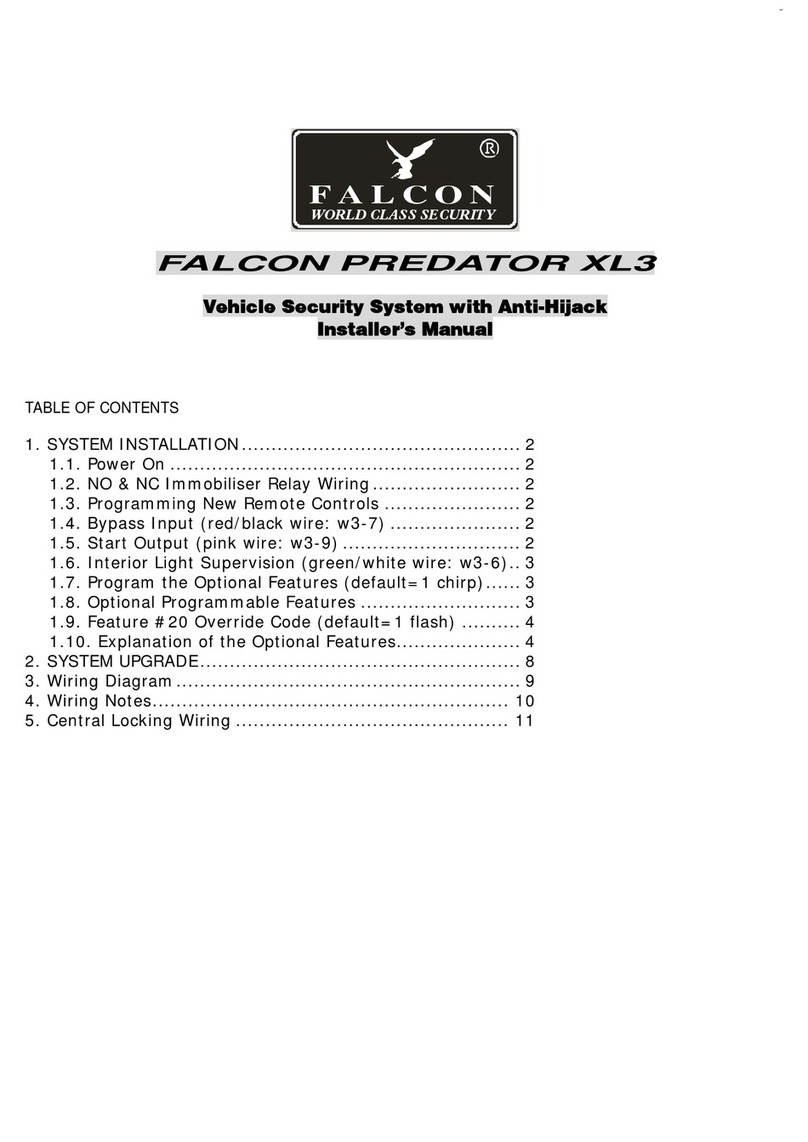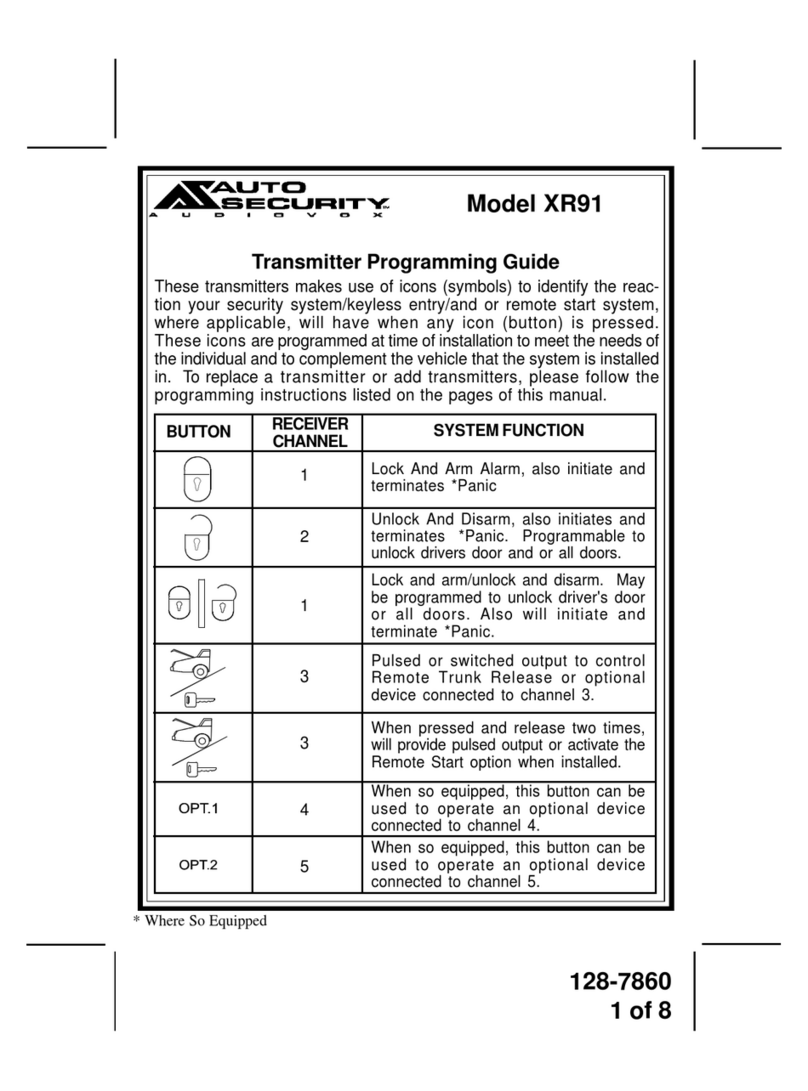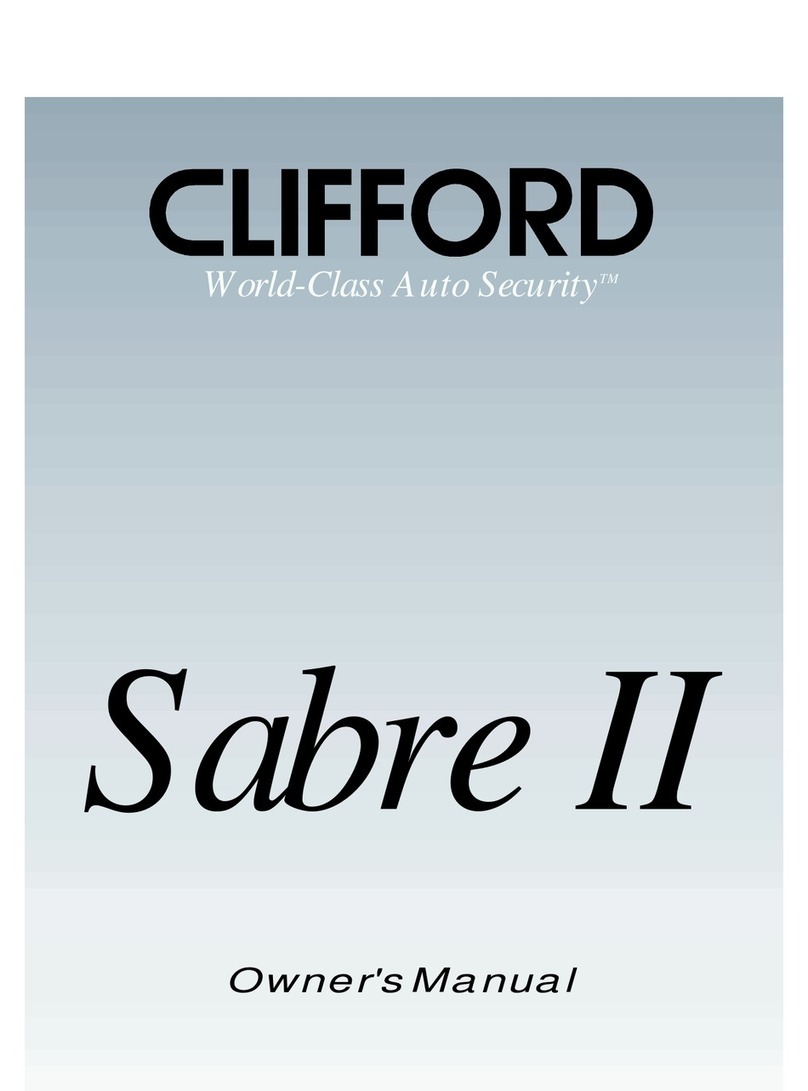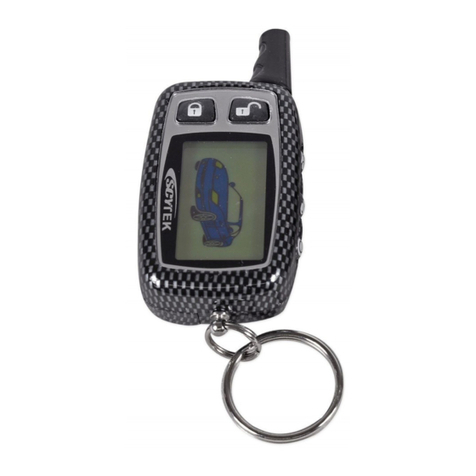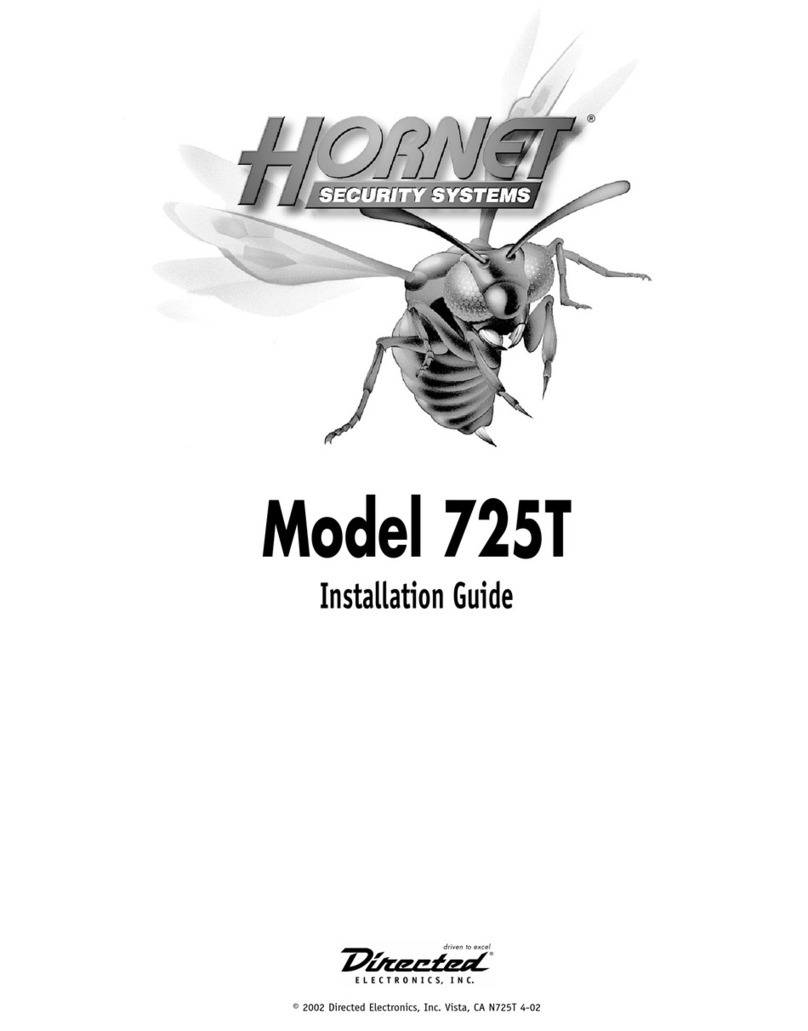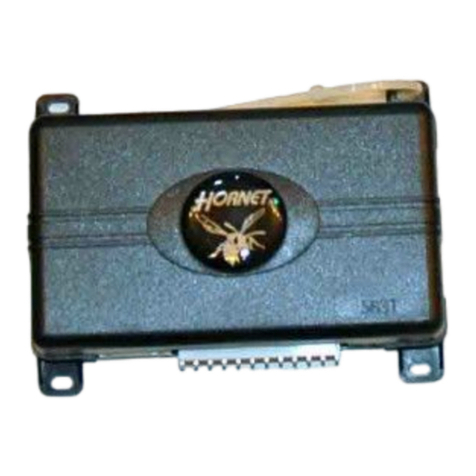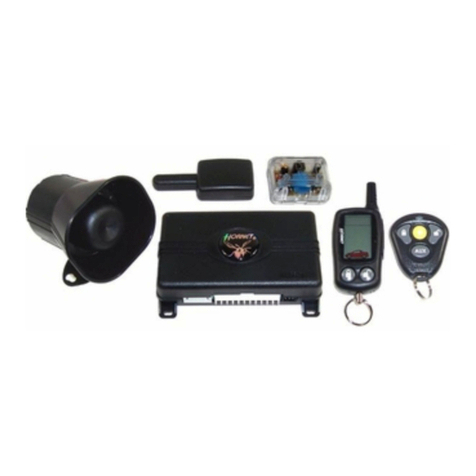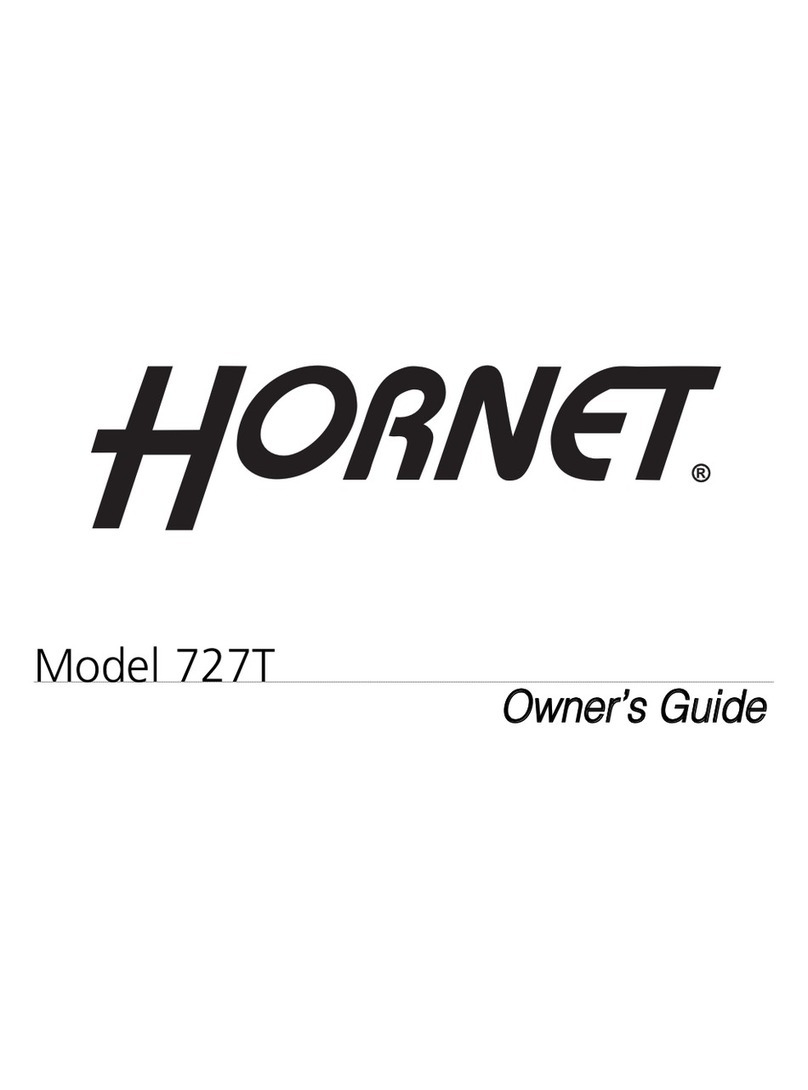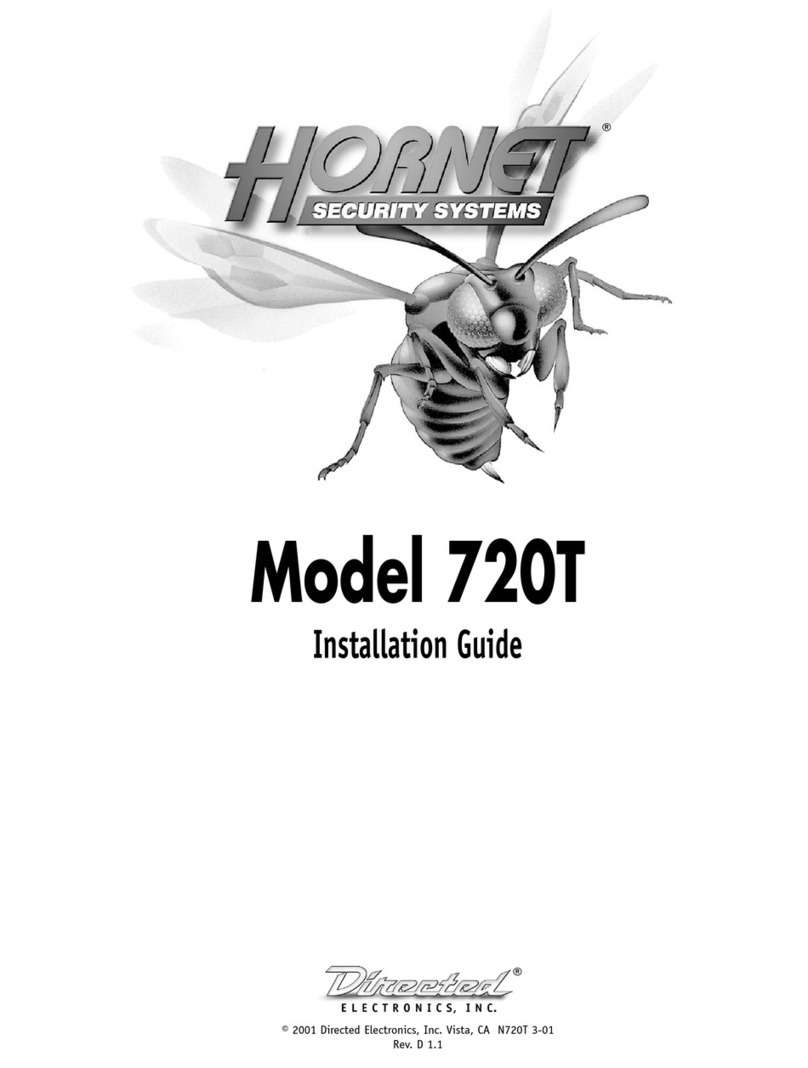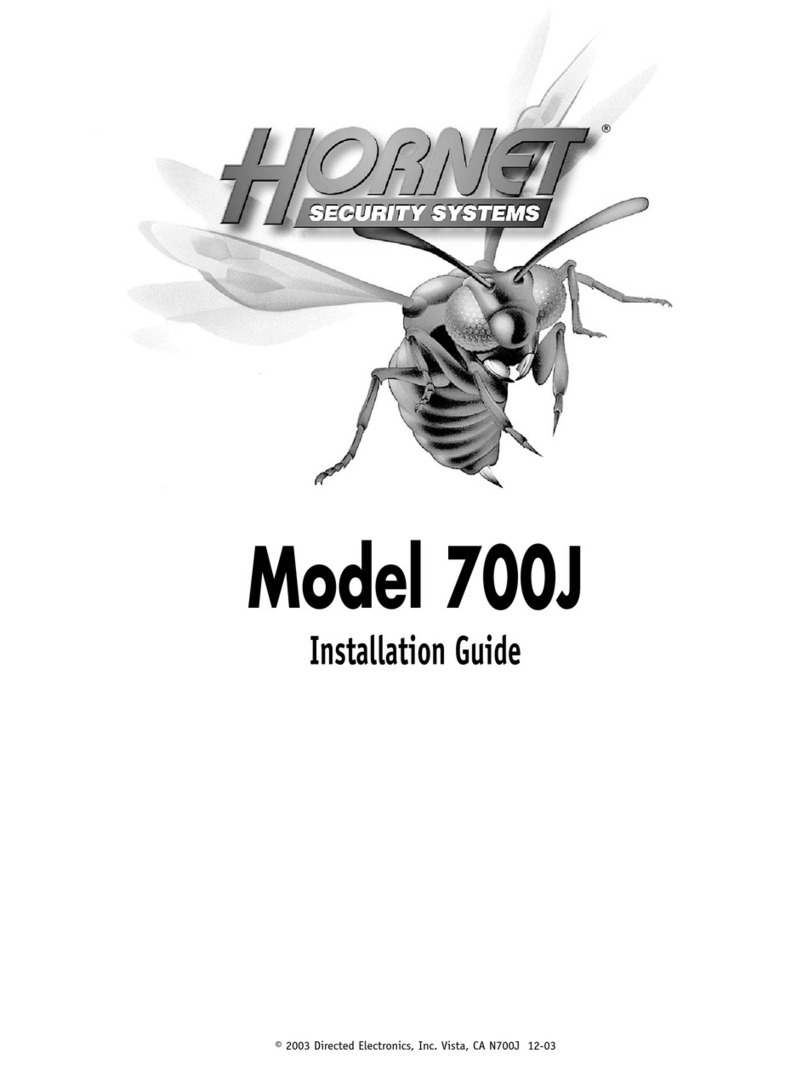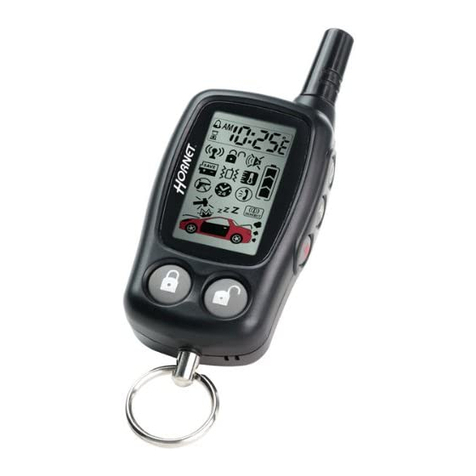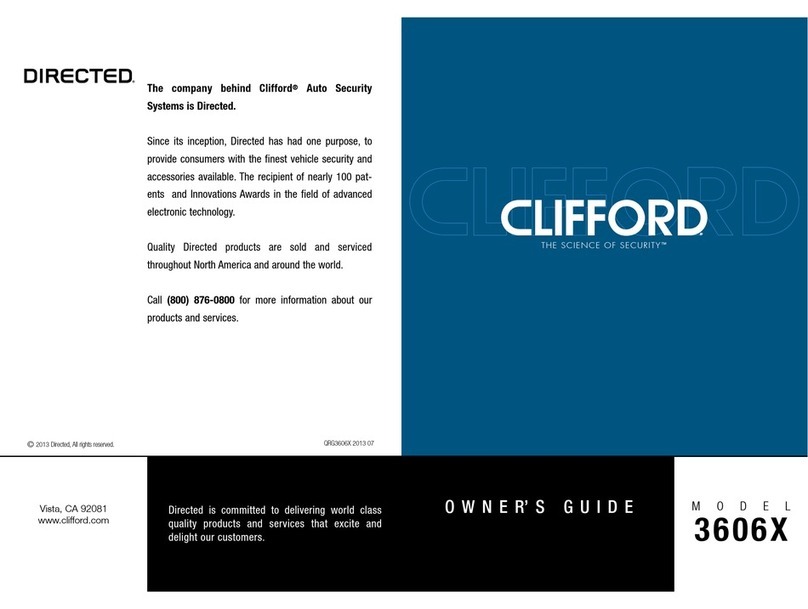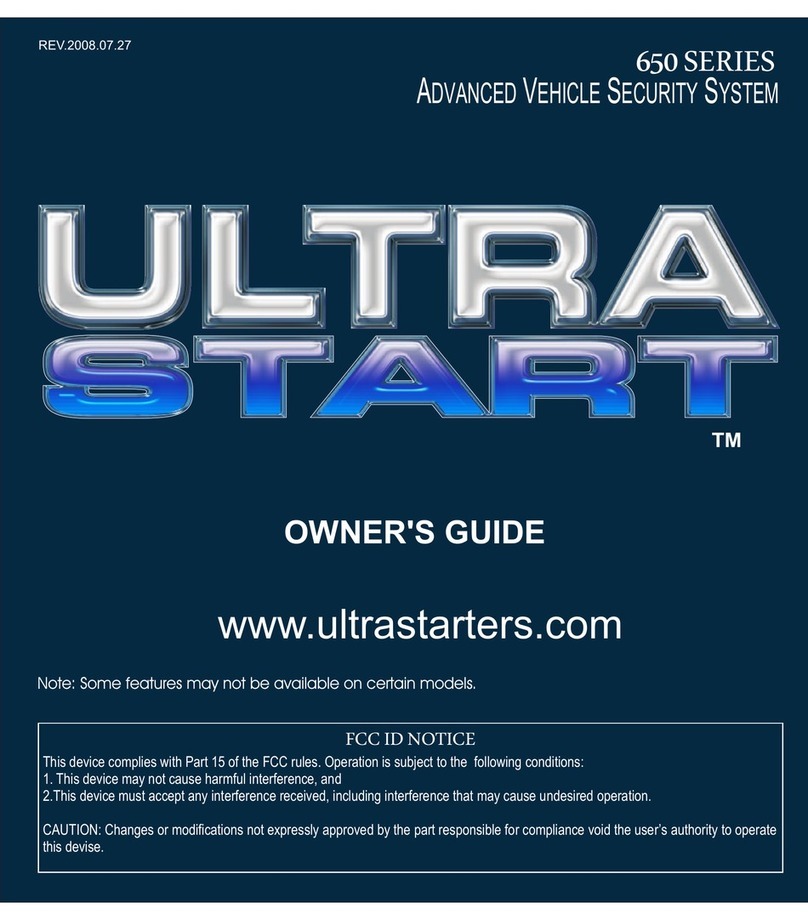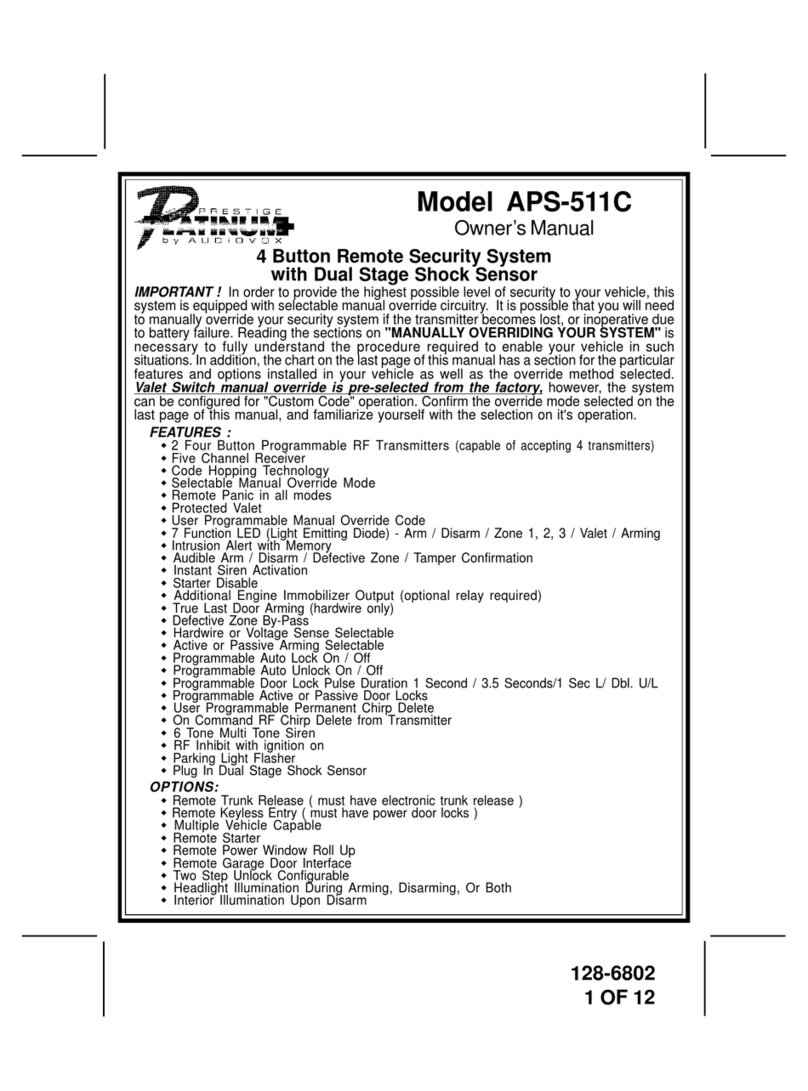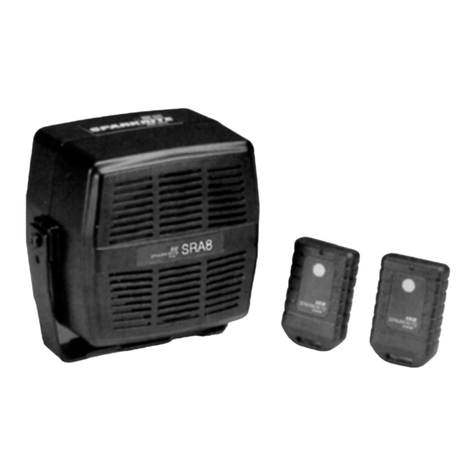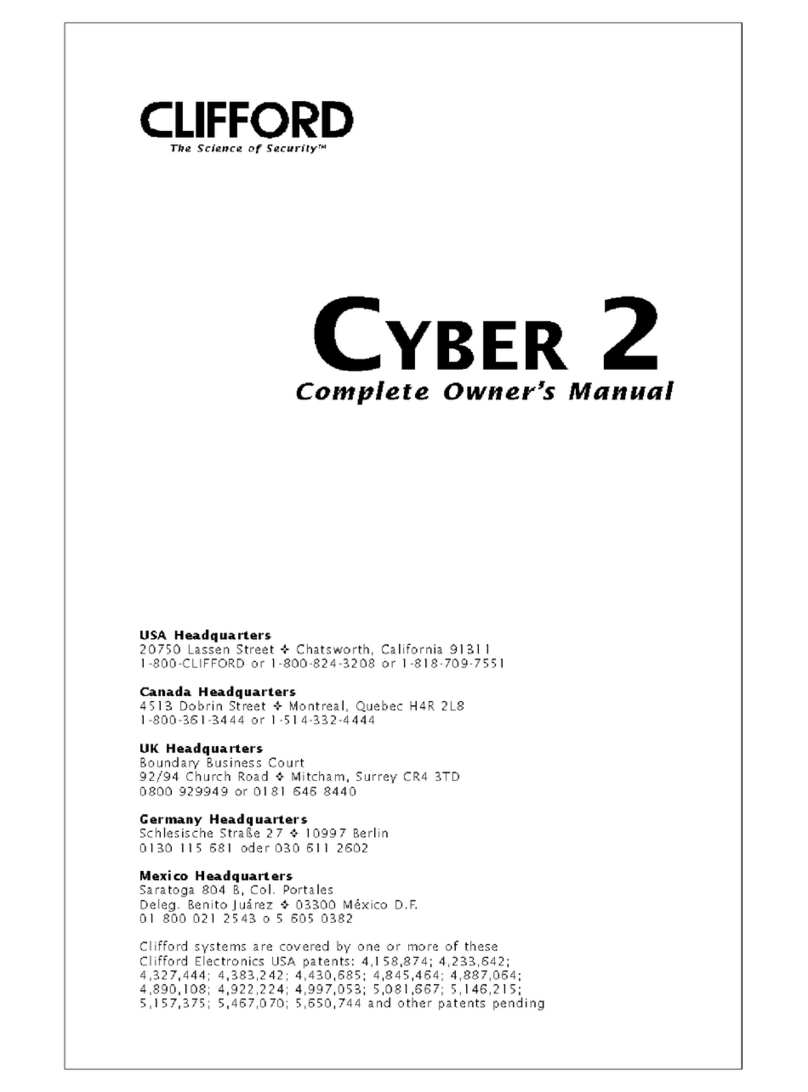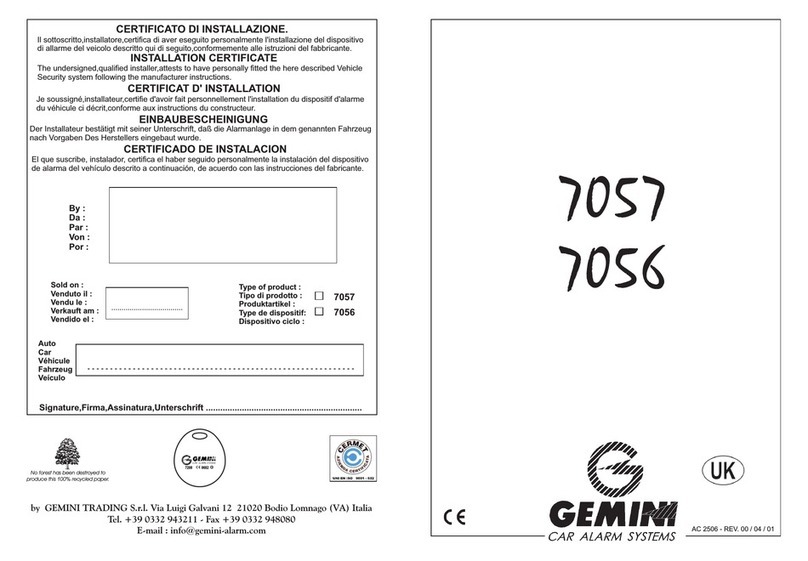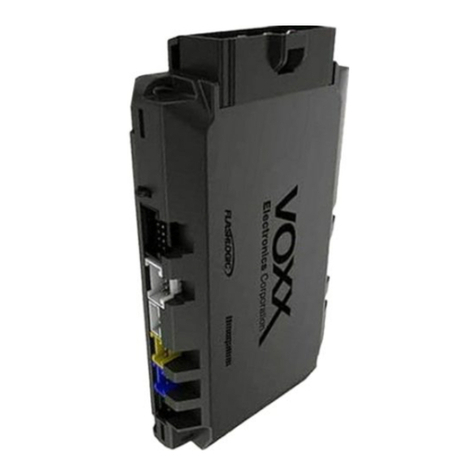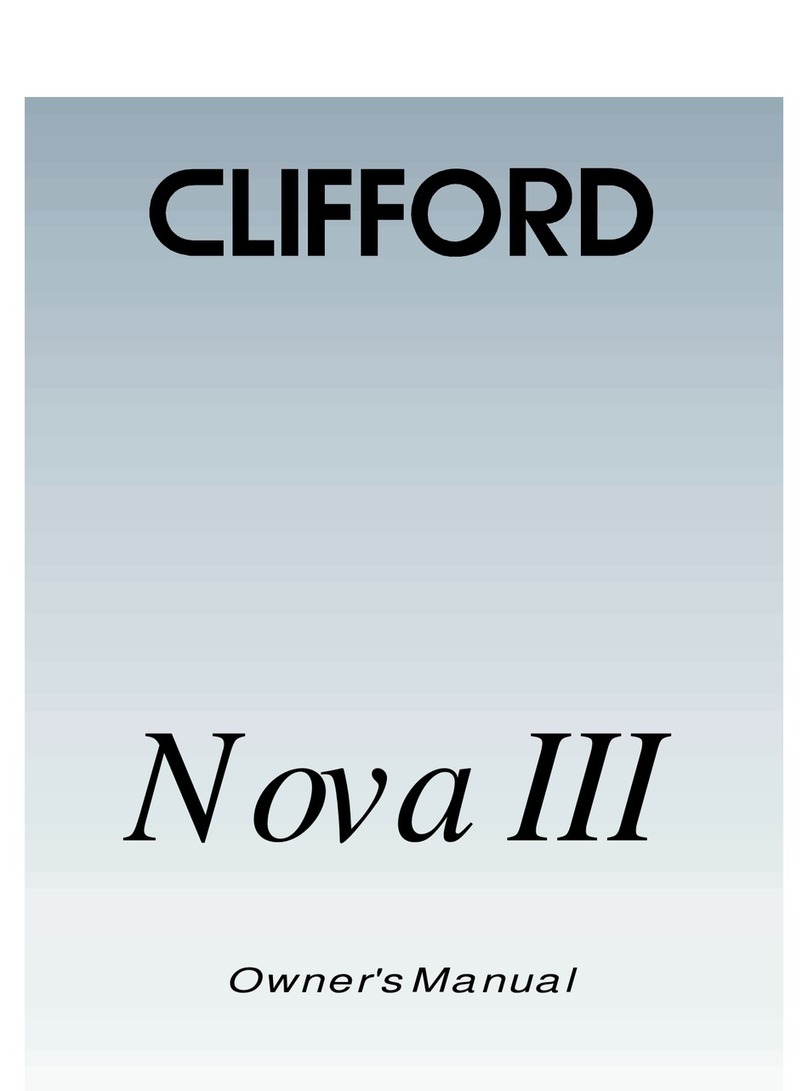22© 2005 Directed Electronics, Vista, CA—all rights reserved
ttaabblleeooffccoonntteennttss
Hornet®, Bitwriter®, Stealth Coding Technology™, Doubleguard®, ESP™, FailSafe®, Ghost Switch™,
Learn Routine™, Nite-Lite®, Nuisance Prevention®Circuitry, NPC®, Revenger®, Silent Mode™, Soft
Chirp®, Stinger®, Valet®, Vehicle Recovery System®, VRS®, and Warn Away®are all Trademarks or
Registered Trademarks of Directed Electronics.
wwhhaattiissiinncclluuddeedd..................................................................................................................................33
pprriimmaarryyhhaarrnneessss((HH11))wwiirreeccoonnnneeccttiioonngguuiiddee..........
..................................................................................33
ddoooorrlloocckkhhaarrnnees
sss((HH22))wwiirreeccoonnnneeccttiioonngguuiiddee........................................................................................88
identifying the door lock system . . . . . . . . . . . . . . . . . . . . . . . . . . . . . . . . . . . . . . . . . . . . . . . . . . . 8
at the switch . . . . . . . . . . . . . . . . . . . . . . . . . . . . . . . . . . . . . . . . . . . . . . . . . . . . . . . . . . . . . . . . 9
type A: positive-triggered, relay-driven system . . . . . . . . . . . . . . . . . . . . . . . . . . . . . . . . . . . . . . . . 10
type B: negative-triggered, relay-driven system . . . . . . . . . . . . . . . . . . . . . . . . . . . . . . . . . . . . . . . . 11
type C: reversing polarity system . . . . . . . . . . . . . . . . . . . . . . . . . . . . . . . . . . . . . . . . . . . . . . . . . . 12
type D: adding one or more after-market actuators. . . . . . . . . . . . . . . . . . . . . . . . . . . . . . . . . . . . . . 13
type E: electrically-activated vacuum . . . . . . . . . . . . . . . . . . . . . . . . . . . . . . . . . . . . . . . . . . . . . . . 14
type F: one-wire system (cut to lock, ground to unlock) . . . . . . . . . . . . . . . . . . . . . . . . . . . . . . . . . . 15
type G: positive (+) multiplex . . . . . . . . . . . . . . . . . . . . . . . . . . . . . . . . . . . . . . . . . . . . . . . . . . . . 16
type H: negative (-) multiplex. . . . . . . . . . . . . . . . . . . . . . . . . . . . . . . . . . . . . . . . . . . . . . . . . . . . 18
aauuxxiilliiaarryyhhaarrnneessss((HH33))wwiirreeccoonnnneeccttiioonngguuiiddee......................
..................................................................1199
pplluugg--iinnLLEEDDaannddvvaalleett//pprrooggrraamms
swwiittcchh..................................................................................................2222
iinntteerrnnaallpprrooggrraammmmiinnggjjuummppeerr..................................................................
..........................................2233
light flash jumper . . . . . . . . . . . . . . . . . . . . . . . . . . . . . . . . . . . . . . . . . . . . . . . . . . . . . . . . . . . . 23
oonn--bbooaarrdddduuaallssttaaggeeiimmppaaccttsseennssoorr....................
..................................................................................2244
bbyyppaassssiinnggsseennsso
orriinnppuuttss............................................................................................
..........................2244
ttrraannssmmiitttteerr//rreecceeiivveerrlleeaarrnnrroouuttiinnee.....................................
...................................................................2255
44--bbuuttttoonnttrraannssmmiitttteerrccoonnffiigguurra
attiioonn......................................................................................................2266
LLCCDD22--wwaayyttrraannssmmiitttteerraaddddiittiioonnaallccoonnttrroollss..................................................
..........................................2277
ssyysstteemmffeeaattuurreesslleeaarrnnrroouuttiinnee..........................
....................................................................................2288
ffeeaattuurreessmmeennu
u....................................................................................................
..............................2299
ffeeaattuurreeddeessccrriippttiioonnss...............................................
...........................................................................2299
nnuuiissaanncceepprreevveennttiioonn®®c
ciirrccuuiittrryy™™..........................................................................................................3311
ttaabblleeooffzzoonneess....................................................................
..............................................................3322
ttrroouubblleesshhoooottiinngg....................
............................................................................................................3322
wwiirriinnggqquuiicckkrreeffeerreenncceeddiiaaggrraamm...........................................................
.................................................3344

